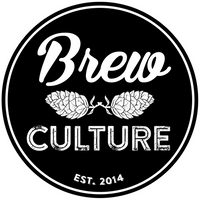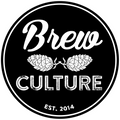Red & Amber Beer Styles

A Reconsideration of Red & Ambers
In the simpler times of brewing, pre-and-early North American craft beer boom, referring to a beer by its colour was standard practice. A practice that continues to this day that I want to dig into and highlight as a tool to make beers that will satisfy the brewers soul while having the potential of being a high volume brand. As I travel Eastern Canada chatting with brewers, I’ve had the luxury of tasting an array of delicious red and amber beers. For some brewers they sell well and for others they don’t. What I’ve come to realize is the discriminating factor is often not flavour or quality but rather the naming and marketing of the beer. Those that have found more success are dropping the traditional beer style names in favour of using two simple words: Red or Amber.
Describing beers by colour has led to a wide spectrum of beer styles represented by common worlds like Red and Amber and has created geographical expectations that depend on the most popular beers of a particular region. In the early days of craft beer in Canada, the big breweries did a wonderful job capitalizing on very quaffable red and amber beers. The merits of these liquids can be debated and is likely to start a bar fight amongst beer geeks due to their simplicity but in retrospect, I believe that simplicity allowed for drinkability and was a necessity to achieve mass commercial appeal. In today’s market, beer consumers have a better understanding of the spectrum of flavours they can expect, and I think it’s time we revisit the concept of what a Red and Amber can taste like. They can be brewed-to-style, or a loose interpretation of a style only limited by a brewer’s creativity. With the right marketing energy behind a Red or an Amber, a brewery can create a successful flagship brand that is both delicious and cost efficient.
The beers I want to focus on within this colour profile are the easy drinking, quaffable, pintable, approachable, introduction-to-craft-beer-styles. They can be lagers or ales, have moderate alcohol levels but most importantly are balanced and modest in flavour intensity. A quick skim through the BJCP styles yields an extensive list of classics: International Amber Lager, Czech Amber Lager, Oktoberfest (pre-70s), Marzen, Vienna Lager, Altbier, Ordinary Bitter, Best Bitter, Strong Bitter, Scottish Light, Scottish Heavy, Scottish Export, Irish Red, Dark Mild, American Amber Ale, California Common, and Kentucky Common. This exhaustive list allows for a lot of freedom recipe-wise, but these names often aren’t contributors to commercial success outside of the well-timed seasonal taproom offering despite often being the beer brewers are most excited about. By highlighting the key ingredients that dominate the flavour spectrum in these beer styles, I hope to demonstrate that a brewery doesn’t need to compromise when brewing a Red or Amber and can in fact gain efficiencies and reduce costs across the brewing operation through careful recipe development and proper house yeast strain selection.
Malt is one of the dominant flavours in this beer style. The first big question is what base malt to use. For economic reasons it makes sense to try and use the house base malt complemented by other base malts and specialty malts. Vienna malt, Munich malt, Maris Otter, or Northern Spring; exploring malts from different geographical regions and using specific barley varieties can be a great way to make a Red or Amber stand out from the crowd. Barley variety is something we don’t talk enough about but it has the same capacity to create unique flavours that a hop variety does. Once can choose to go 100% with any of the base malts listed above to create a new flavour within their offerings while reducing the amount of specialty malts in the recipe to achieve a similar flavour differentiation. Careful consideration of malt in inventory while designing new recipes can help reduce overall malt inventory while simplifying the ordering and inventory management processes.
The base malt can be the highlight or the supporting flavour, but it will need help from specialty malts to get the colour and flavour profile right. Finding the right balance of low to moderate levels of specialty malt flavours is key. Balance, drinkability, and colour are the goals and less is more when it comes to creating that magic in this beer category. An often-forgotten category of malts that can provide unique flavours is melanoidin malt; longer kilned malts that result in darker colours and more Maillard flavours. These malts can range from 15˚ L to 115˚ L in colour with the darker version often being a highlight of a maltsters catalogue. Think of this category of malt as a boosted version of Munich malt. Since they get their colours over long periods of time at lower temperatures in the kiln, the toasted character is richer and less harsh than similar coloured malts that go through the roasting process. When working with caramel and crystal malts, I lean towards choosing one or two at most, having too many types of caramel malts in a recipe can often create a muted flavour profile and be cloying. The other type of malts that can play an interesting role in these beers are amber and brown malts. Both these go through a light roasting process and can provide depth to the cereal flavour profile without the sweetness associated with caramel and crystal malts. Not to be overlooked, the darkest of dark malts can make an appearance in these styles as well. Chocolate malt, black malt and roasted barley can be added in small quantities to adjust the colour of the beer without impacting flavour. Consider this, you can brew a true-to-style Irish Red Ale using only base malt and roasted barley. Dark malts can impart overwhelming flavours sometimes, one method to control this and reduce the extraction of harsh flavours is to add them after mash conversion, a process employed by many European dark lager brewers. These darker malts will also have an impact on pH and mouthfeel. A great way to adjust mouthfeel is by adding malted or flaked adjuncts such as oats, wheat, barley, etc. As you can see, there are lots of options to create a diverse malt flavour profile within this colour range. When designing the gain bill, consider what flavours you want to achieve, which style you want to draw inspiration from and design the recipe to achieve that flavour goal. I will reiterate my statement that less is more and recommend keeping the grain bill to no more than 4 or 5 grains. This allows a brewer to showcase the ingredients chosen and leaves room for the other ingredients to balance out the act.
The last note on malt and colour is the highly debated question of how to get a red beer as opposed to a copper or brown beer. For this, there’s plenty of brewery folklore and anecdotes as well as malts that are marketed with the word red in them. The only published evidence I have found that provides any insight on this is a very quick line in MALT A Practical Guide from Field to Brewhouse by John Mallett where he states that red hues can be associated with higher protein levels in green malt.
Hops take a supporting role in this category, the goal is to use restraint to achieve balance or style guidelines. Unless you are going for a more hop forward style like a Bitter or an American Amber Ale classic hops like Magnum and Fuggle will suffice; however, my personal preferences lean towards using hops that have pine, cedar, earthy and wood flavour as these provide complimentary flavours to the those of the malt. To achieve balance, the bitterness level needs to be in line with the final gravity. This category can handle between 20 and 30 BU, anything outside this range could impact drinkability and balance.
The main reason this beer category is exciting to me is because it provides an opportunity to create a liquid that can produce enough house yeast to brew an entire catalogue of beer should a brewery choose to go down this route. Yeast can be leveraged to create a house character that makes a brewery's beer stand out from the crowd. House character is not limited to aroma and flavour but also includes mouthfeel components such as roundness and dryness. For former and the later are both affected by the chemical compounds a yeast releases during fermentation as well as its attenuation range. If a house yeast is managed properly, aroma, flavour and mouthfeel parameters can be adapted to each recipe to produce a unique profile while providing significant cost savings through a yeast management program. Without going through the exhaustive list I pulled from White Labs and Lallemand, I counted over 20 strains that could be suitable for both this category of beers and as house yeast strains. The top sellers like WLP001 California Ale Yeast® and LalBrew Nottingham™ provide proven consistent results but for brewers that want to develop a yeast program around a unique yeast strain, here are three selections from the White Labs catalogue that can set your brewery apart:
WLP013 London Ale Yeast – A workhorse yeast that provides consistent results. With an attenuation range from 68% to 75% and medium flocculation, this yeast produces dry beers while adding malt complexity and a unique oak-ester profile. This yeast would be great for a true to style or hybrid Bitter.
WLP860 Munich Lager Yeast – A clean fermenter, with moderate attenuation. This traditional lager strain allows brewers to produce some of the most drinkable Reds and Ambers on the market with malty balanced profiles. With the right characteristics to brew smooth, clean lagers your local town red lager will be hard to turn down.
WLP090 San Diego Super Ale Yeast – Can I just say: “I love efficiency.” This yeast might be a bit less unique in flavour profile than the other two picks but makes up for it in efficiency. A neutral and quick fermenter, this yeast is better suited for the hop-forward brewery that likes dry beer thanks to the higher attenuation that ranges from 76% to 83%. This yeast is a perfect fit for American Amber Ale, California Common and Irish Red Ale all while being able to keep an IPA and strong beer program on course.
The final piece of the puzzle is the water profile for these beer styles. This is going to be unique to each specific style, recipe, and brewery water source. This is an article in itself! The best advice I can offer here is to read the books, apply the basics and perform recipe adjustments to water parameters based on sensory analysis.
This article scratches the surface of the Red and Amber beer category re-imagined as a flagship beer for today's market. The hope is that this inspires brewers to ask questions and find ingredients that can help them produce beers that can be economical, exciting to brew and popular with consumers. Check out the Culture section on BREWCULTURE.COM for detailed sample recipes that put into application some of the ingredients and style profiles discussed in this article.

